SWITZERLAND: a travel guide for music fans
Visit destinations for classical music and opera art with a historical connection. Get to know exciting ideas and background information
0
OVERVIEW MAP
Here you can find the locations of all described destinations on Google Maps.
0
1
LIFE AND WORK OF ARTISTS IN SWITZERLAND
Wagner lived 16 years and Stravinsky lived 4 years in Switzerland, where both wrote significant works in the history of music. But other outstanding composers also visited the country, including one who learned to yodel.
1
2
CONCERT HALLS AND OPERA HOUSES
The country has a high density of opera houses and concert halls. Among them, the Zurich Opera stands out. 3 important works were premiered there.
2
3
MUSEUM
Tribschen became one of the most important memorials of Richard Wagner ever.
3
4
CHURCHES
Mendelssohn played on many organs of Swiss churches and Wagner married in one.
4
5
MONUMENTS
Two monuments with a beautiful view
5
6
HOUSES AND APARTMENTS OF COMPOSERS
Where Puccini, Wagner and Stravinsky dwelt
6
7
HOTELS
Where Richard Wagner first read from his Ring and Felix Mendelssohn witnessed the world-famous sunrise of the place.
7
8
MUSIC PIECES RELATING TO SWITZERLAND
Twice Wagner, once Rossini
8
MAP OF THE DESTINATIONS OF THE TRAVEL GUIDE SWITZERLAND
Zoom in for destinations in SWITZERLAND:
LIFE AND WORK OF ARTISTS IN SWITZERLAND
Richard Wagner
First asylum in Zurich
Wagner had to flee headlong from revolutionary Dresden to Switzerland with his wife Minna. His Zurich exile lasted from 1849-1859, where he befriended the German industrialist couple Wesendonck, who became his patrons. His stormy love for the patron’s wife Mathilde Wesendonck inspired him to write his great love opera “Tristan und Isolde“.
Second asylum in Zurich
Expelled by the Munich government, Ludwig II financed Wagner’s asylum on the southern edge of Lucerne. Wagner lived there with his wife Cosima from 1866 to 1872. The young Friedrich Nietzsche, professor at the University of Basel, frequently visited the Wagners, and Ludwig II also paid his respects (incognito) to the master. Wagner had already been in Lucerne before. He composed the third act of his work “Tristan & Isolde” in the Hotel Schweizerhof 7 years earlier. He arrived with his Érard grand piano and occupied a suite for two months.
Richard and Cosima were married in St. Matthew’s Church and she bore him three children in Tribschen. It is possible that the generous Wagner also enabled the housekeeper Verena Weidman to have an offspring; the child is said to have been very much like Richard. Wagner also enjoyed the excursions to the neighboring mountains in Lucerne, especially Mount Pilatus.
LINK TO THE COMPLETE WAGNER BIOGRAPHY
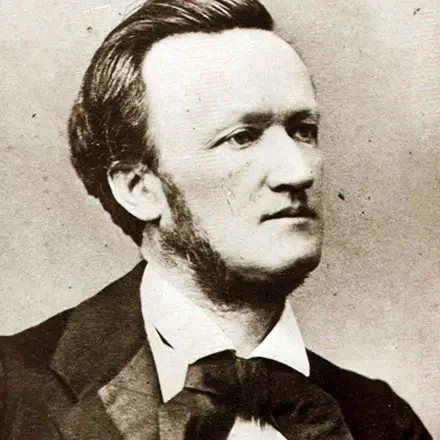
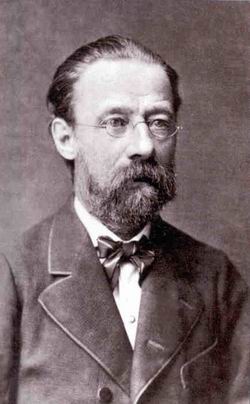
Felix Mendelssohn Bartholdy
Switzerland explored on foot
On four occasions, Mendelssohn traveled through Switzerland for a longer period of time, probably covering approximately one thousand kilometers on foot. The first time as a 14-year-old with his family and several servants coming from Berlin, another time during the summer of the century with great floods and the last time deeply saddened after he had learned of the death of his beloved sister Fanny. Mendelssohn wandered all over Switzerland, some places were dear to his heart and he visited them several times.
He even learned to yodel
From his correspondence we learn that he learned some yodeling in Switzerland, which “sounds rough in the room, but outside, in the early morning and bright weather, to the ringing of the cows in the valley, beautiful and enthusiastic”.
Mendelssohn was also a talented draftsman; a total of more than 300 works of art by him have survived, several dozen of them with motifs from Switzerland.
TO THE COMPLETE MENDELSSOHN BIOGRAPHY
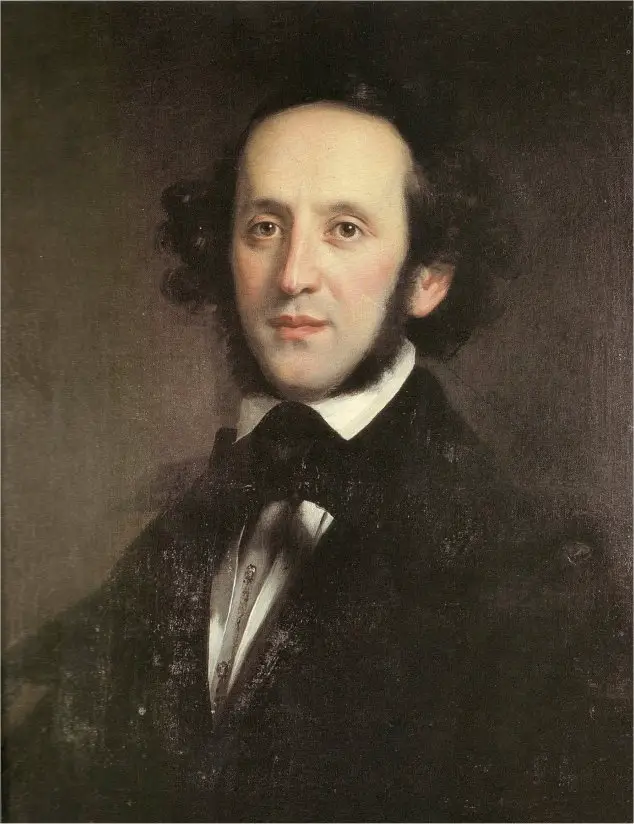
Sergey Rachmaninov
Exiled Russian
Rachmaninov left Russia as a renowned musician in the wake of the revolutionary turmoil. He became a successful and wealthy concert pianist in the United States. However, due to his many travels, his compositional activities came to a standstill, and he could not make friends with American culture. So he decided to return to Europe with his wife and they found an estate in Switzerland on Lake Lucerne where they could live in the desired seclusion.
They had a modern Bauhaus-style house built in Hertenstein, which still exists almost unchanged today. The Rachmaninovs spent here the years 1931-1939 (especially the summer months). Rachmaninov composed his 3rd symphony and variation works here, among others. With the outbreak of World War II, the Rachmaninovs left Switzerland again for the USA.
The building still belongs to the heirs, although a conflict has arisen over its use following the death of an heir in 2012. The building is open only on certain occasions.
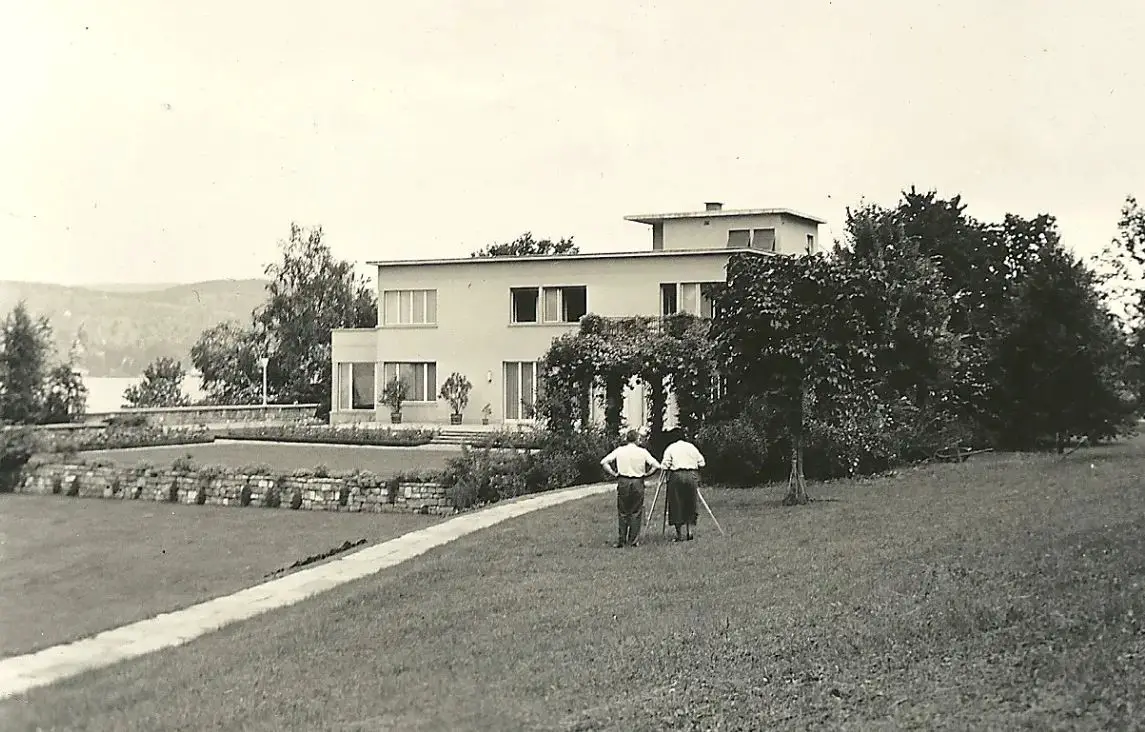
Igor Stravinsky
Work on the balettes for the “ballets Russes
With the first work commissioned for Paris, the Firebird, Stravinsky changed his winter residence to Lake Geneva. On the one hand because his wife appreciated this mild place due to health problems and on the other hand because the impresario of the Ballets Russes, Dhiagilev, had temporarily set up camp in Lausanne.
Collaboration with Ramuz and Ansermet
Stravinsky worked on many important works during this time (Sacré du Printemps, les noces, l’histoire du Soldat, etc.) and became friends with the conductor Ernest Ansermet, who became an important promoter of his works, and with the writer Ramuz, who wrote the text for L’histoire du Soldat, based on a Russian tale.
TO THE COMPLETE BIOGRAPHY OF STRAVINSKY
With Ramuz (left):
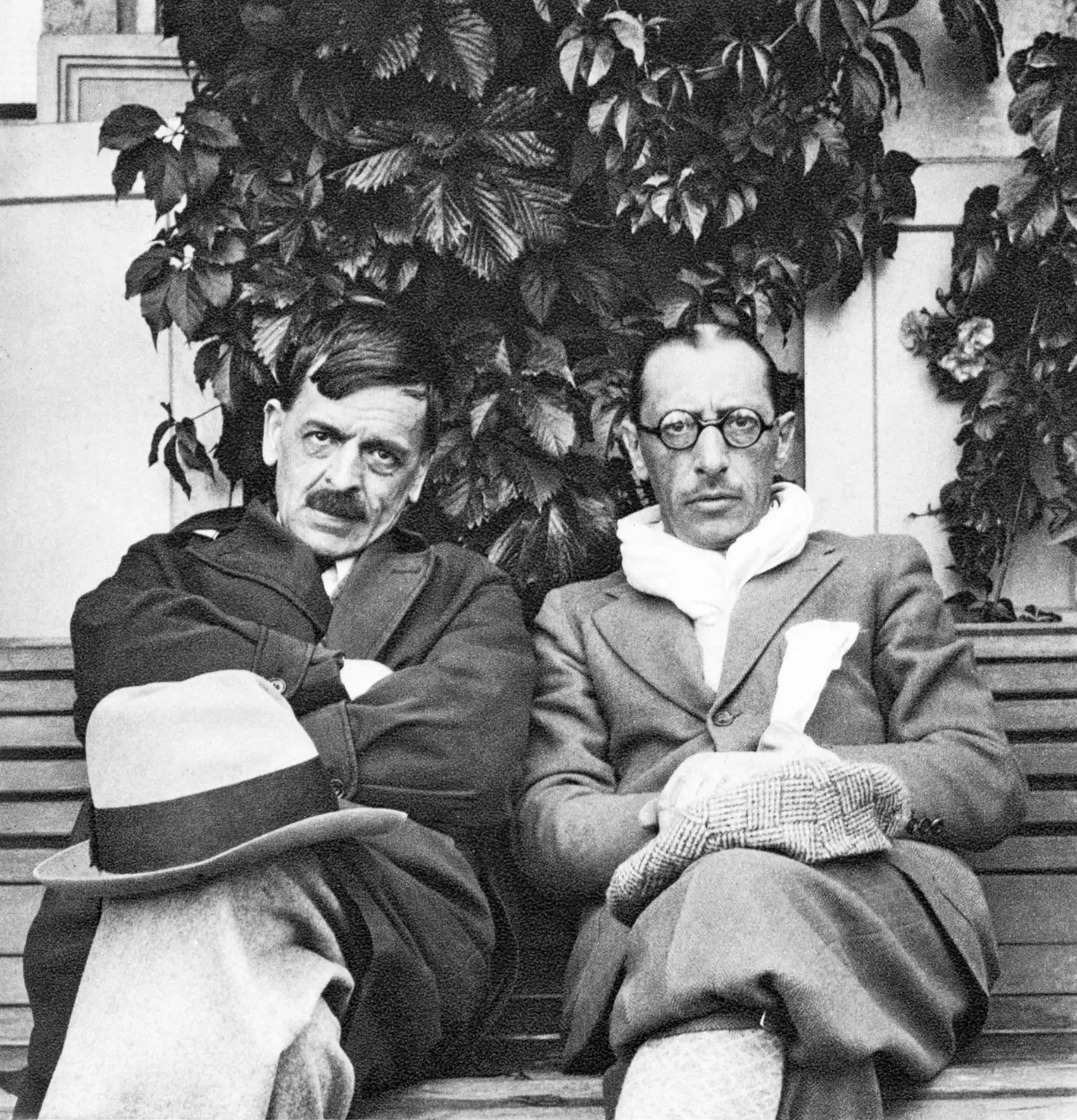
Giacomo Puccini
Summer retreat in a small village of Ticino
Das kleine Tessiner Dorf Vacallo bei Chiasso hatte 1892 die Ehre zwei Grosse der Opernmusik zu beherbergen. Puccini begab sich zwischen 1886 und 1892 mehrere Male in die Sommerfrische dieses Dorfes und mietete ein Haus. Schräg gegenüber, in Sichtweite befand sich Ruggiero Leoncavallo an der Arbeit im Hotel der heutigen «Osteria del Teatro». Beide hängten Plakate als Zeichen ihrer Präsenz aus dem Fenster, Leoncavallo einen Clown als Zeichen des soeben von Toscanini uraufgeführten «Pagliacci» und Puccini eine Faust als Zeichen von Manon (Faust = italienisch «Manone»), da er an der Arbeit von «Manon Lescaut» war, Leoncavallo schrieb sogar ein paar Verse für seinen Kollegen.
LINK ZUR KOMPLETTEN PUCCINI BIOGRAFIE
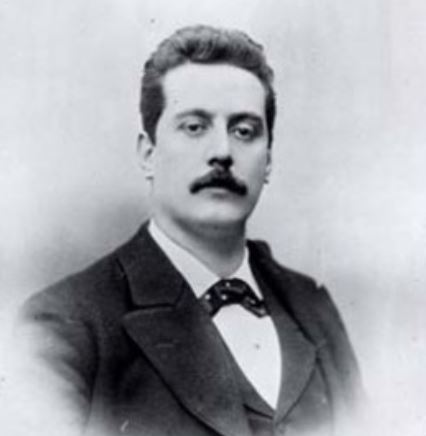
Gioachino Rossini
His Guillaume Tell: a monument for Switzerland
The famous fourth act of Rossini’s opera “Guillaume Tell” with the ballet of the soldiers (“Pas des Soldats”) and the apple shot (“Sois-immobile”) takes place in the market place of Altdorf. Rossini himself had never seen the Central-Switzerland, but knew Geneva and a part of the Alps of western Switzerland. For the premiere at the Grand Opéra in Paris, they sent the stage designer Cicéri to Central Switzerland, where he made sketches for the stage sets.[/sc_fs_faq]
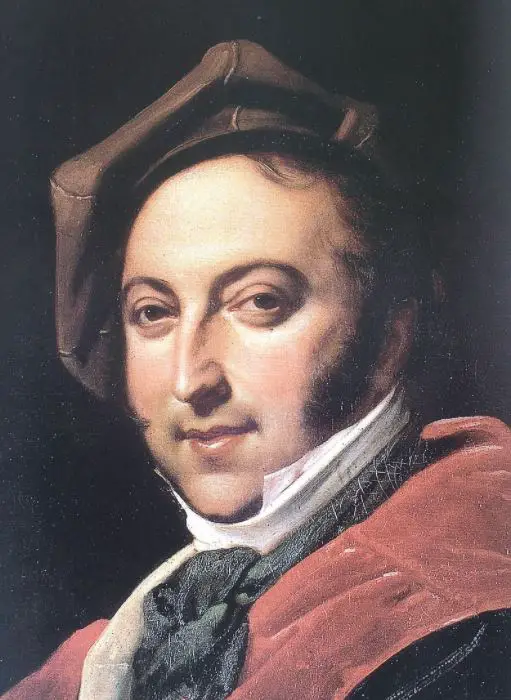
Johannes Brahms
At the publisher’s in Winterthur
Johannes Brahms had various points of contact with Switzerland. One counted 14 visits to Switzerland. First, he found a publisher in Winterthur in Jakob-Melchior-Rieter. A German publisher had rejected him and so he had the German Requiem, among other works, published by Melchior-Rieter.
Conducting and composing in Zurich
Secondly, Brahms had friends in Zurich (e.g. the conductor Hegar and the physician Billroth).He also spent a few summer weeks there in Rüschlikon on Lake Zurich, composing on his Liebeslieder waltz. In 1895 he conducted at the opening of the magnificent Tonhalle Zurich.
Summer retreat on Lake Thun
And finally, Brahms spent three summer holidays on Lake Thun, where, among other things, the famous alphorn theme came to his ears and he incorporated it into his first symphony.
Brahms at Lake Thun:
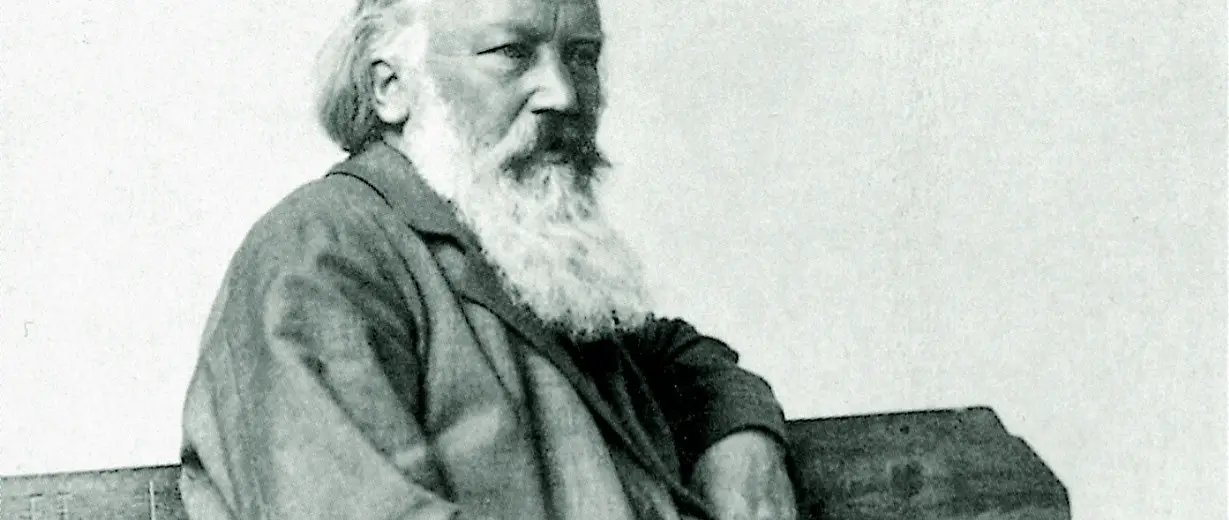
CONCERT HALLS AND OPERA HOUSES
Opera House Zurich I/III
Zurich Opera House is a theater with a focus on opera and ballet. It has a permanent ensemble and repertory theater with about a dozen new productions per year.
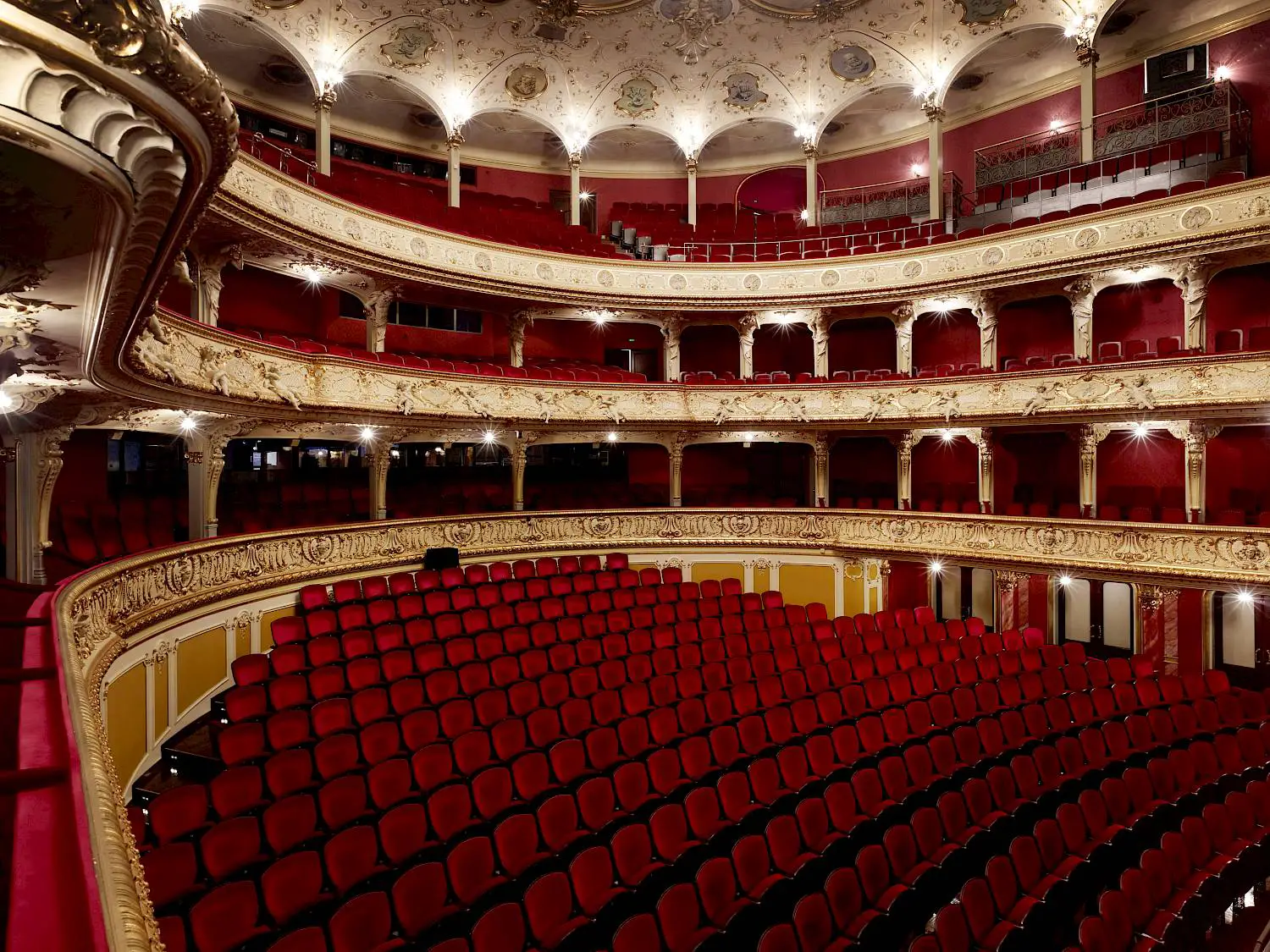
Opera House Zurich II/III
Renowned Opera House
In the predecessor building of the present theater, the so-called Aktientheater, Richard Wagner had conducted several times during his stay in Zurich. Highlights were his exemplary production of the “Flying Dutchman” in 1852 and the small Wagner Festival in 1853.
New construction of a theater
After the fire of the Aktientheater, a new large theater was built, whose construction plans came from a Viennese office. Since the same construction plans were used to build opera houses in Zagreb and Wiesbaden, this opera house exists in 3 identical designs.
Important first performances
The world premiere of “Lulu” by the already deceased Alban Berg took place in this theater in 1937. Hitler had forbidden the first performance in Germany. A year later, the opera “Mathis der Maler” by Paul Hindemith, who had emigrated to Switzerland, was also performed. Finally, the posthumous premiere of Schoenberg’s “Moses und Aaron” also took place.
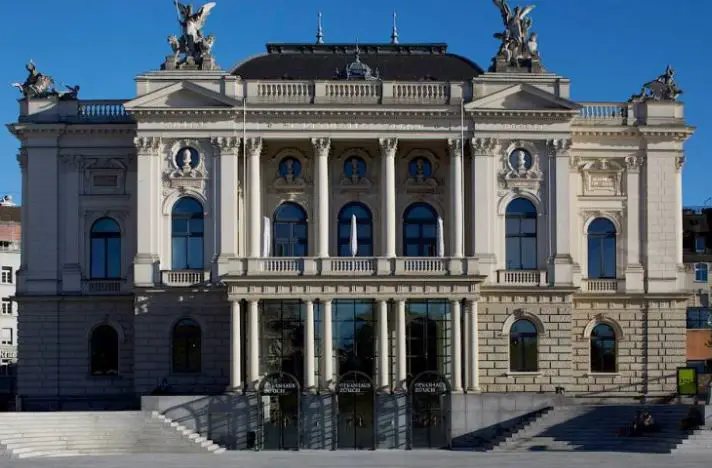
Opera House Zurich III/III
The rediscovery of a composer at the Zurich Opera House
The rediscovery of a composer at the Zurich Opera House.
In 1954, L’incoronazione di Poppea by Monteverdi was staged in Vienna under the direction of Paul Hindemith with partially reconstructed instruments. Nicolaus Harnoncourt sat in the orchestra. The latter, together with Jean-Pierre Ponnelle, recorded a sensational Monteverdi cycle at the Zurich Opera House in the 1970s on period instruments and with Baroque richness of décor. This Zurich cycle ushered in a veritable Monteverdi renaissance and became a legend.
Other concert halls and opera houses in Switzerland.
Opera
Opera House Basel: The opera house has repeatedly received prestigious awards in German-speaking countries for productions and overall opera output
Opera House Bern: Here, concert and opera have been brought together.
Grand Théâtre Genève: Another opera house with supra-regional appeal.
Concert
MUSEUM
Richard Wagner Museum in Tribschen near Lucerne
Expelled by the Munich government, Ludwig II financed Wagner’s asylum on the southern edge of Lucerne. The stately home is majestically situated on Lake Lucerne. It was acquired by the city of Lucerne in 1931 and became a Richard Wagner Museum. Wagner lived there with his wife Cosima from 1866 to 1872, and the young Friedrich Nietzsche, a professor at the University of Basel, frequently visited the Wagners, as did Ludwig II in person. The museum is worth seeing especially the Érard grand piano, which accompanied him everywhere, found its way back to Tribschen with the opening of the museum. It was in this house that the first performance of the Siegfried Idyll took place in 1870, which it gave to his wife on her birthday morning with 15 musicians in the stairwell of the villa.
Richard Wagner Museum (Asylum):
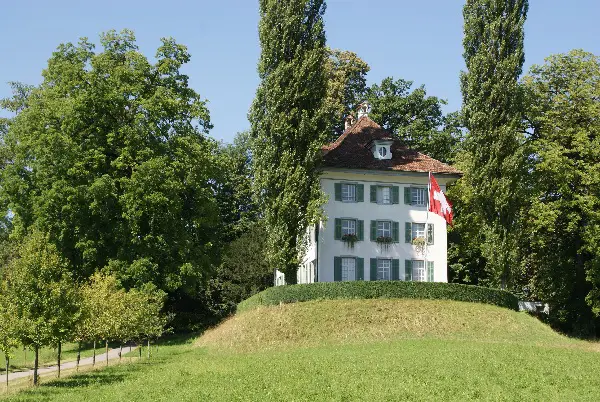
Especially idyllic is the lakeside walk (30 minutes from the train station) or by boat.
CHURCHES
Hofkirche Luzern
On July 2, 1847, Mendelssohn painted this watercolor of the city of Lucerne (the wooden bridge has since been demolished). In the center of the picture you can see the striking Hof Church (St. Leodegar), whose “monumental organ” Mendelssohn had played. The large organ is still preserved and sounds authentic as in Mendelssohn’s time.
Watercolor of Mendelssohn:
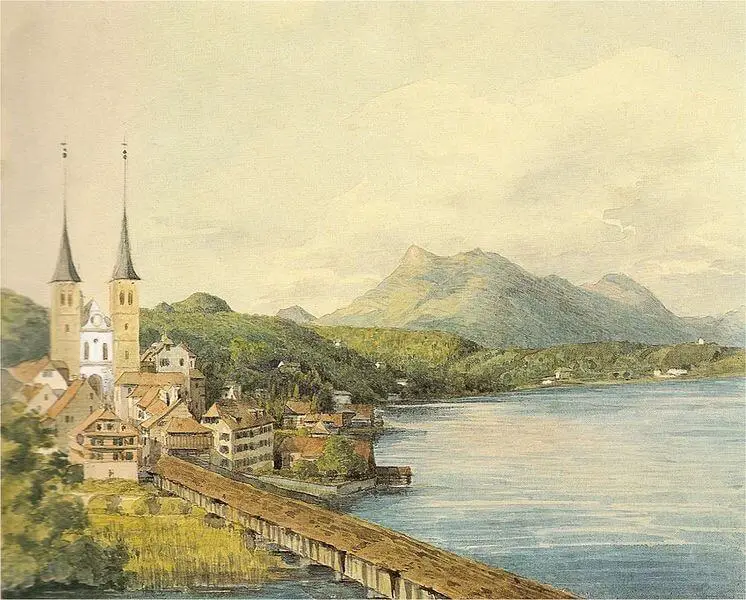
Organ of the Hof Church:
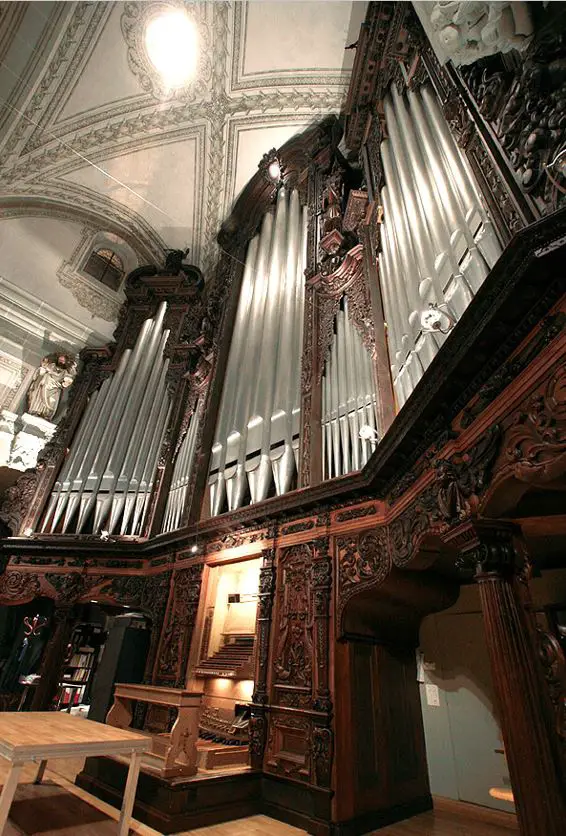
The concert calendar of the Hofkirche can be found on the website:
https://www.kathluzern.ch/pfarreien-standorte/st-leodegar-im-hof/
Kloster Rheinau
Mendelssohn also visited the famous Rhine Falls and painted in watercolors.
Watercolor of Mendelssohn:
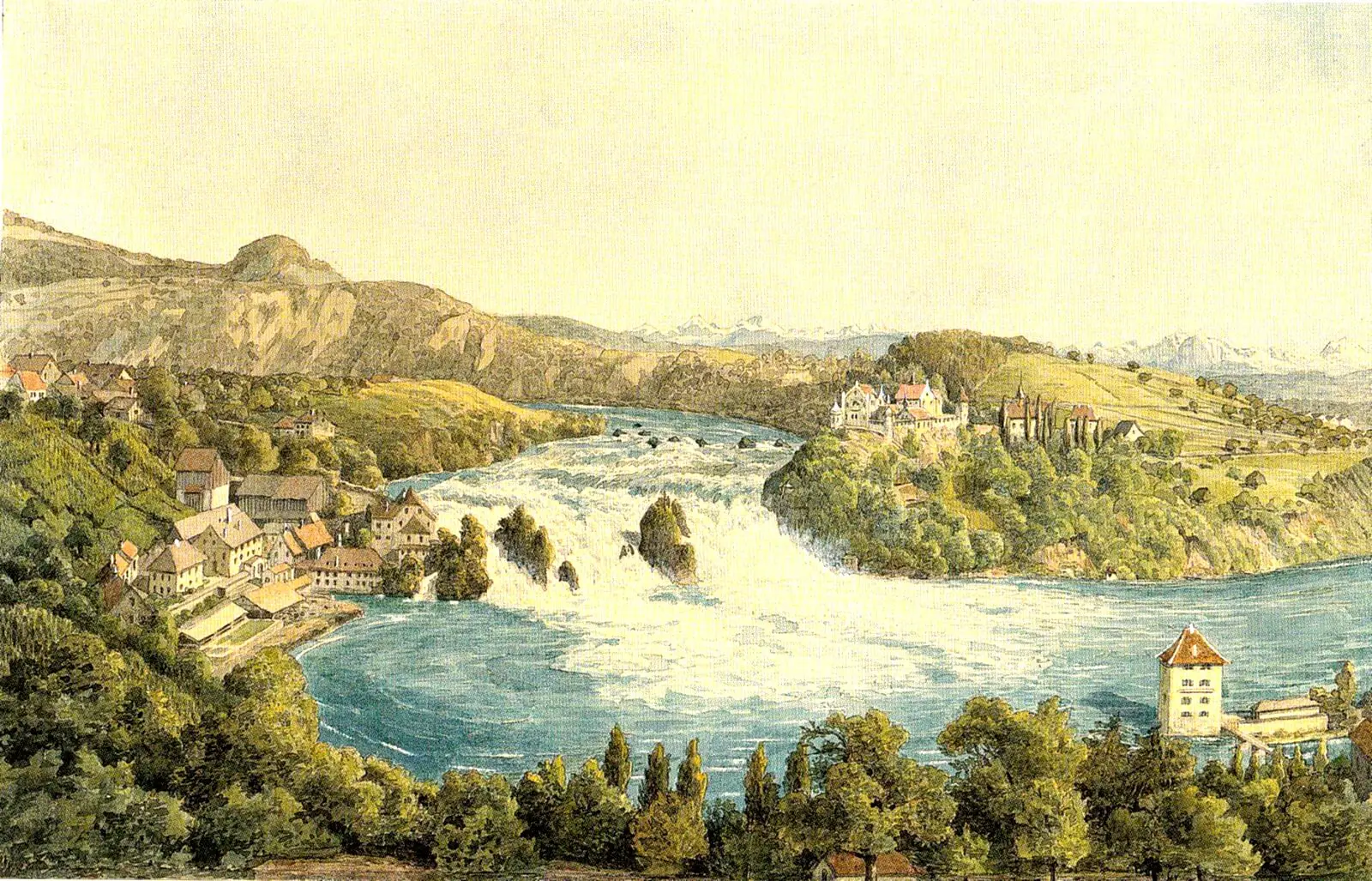
Rhinefall:
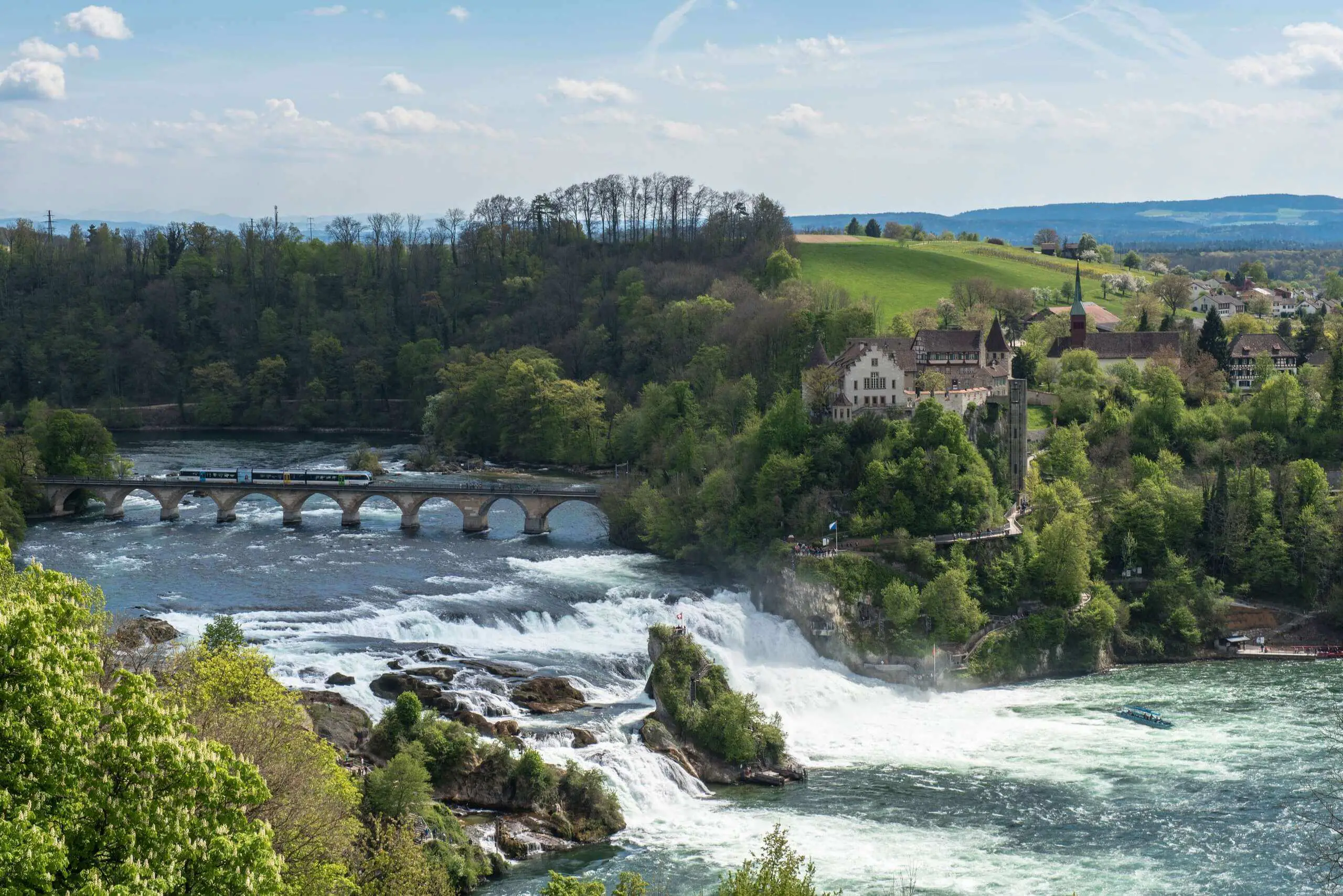
He also visited Rheinau Monastery, a few kilometers downstream, and played the Great Organ of the monastery church there.
Rheinau Convent:
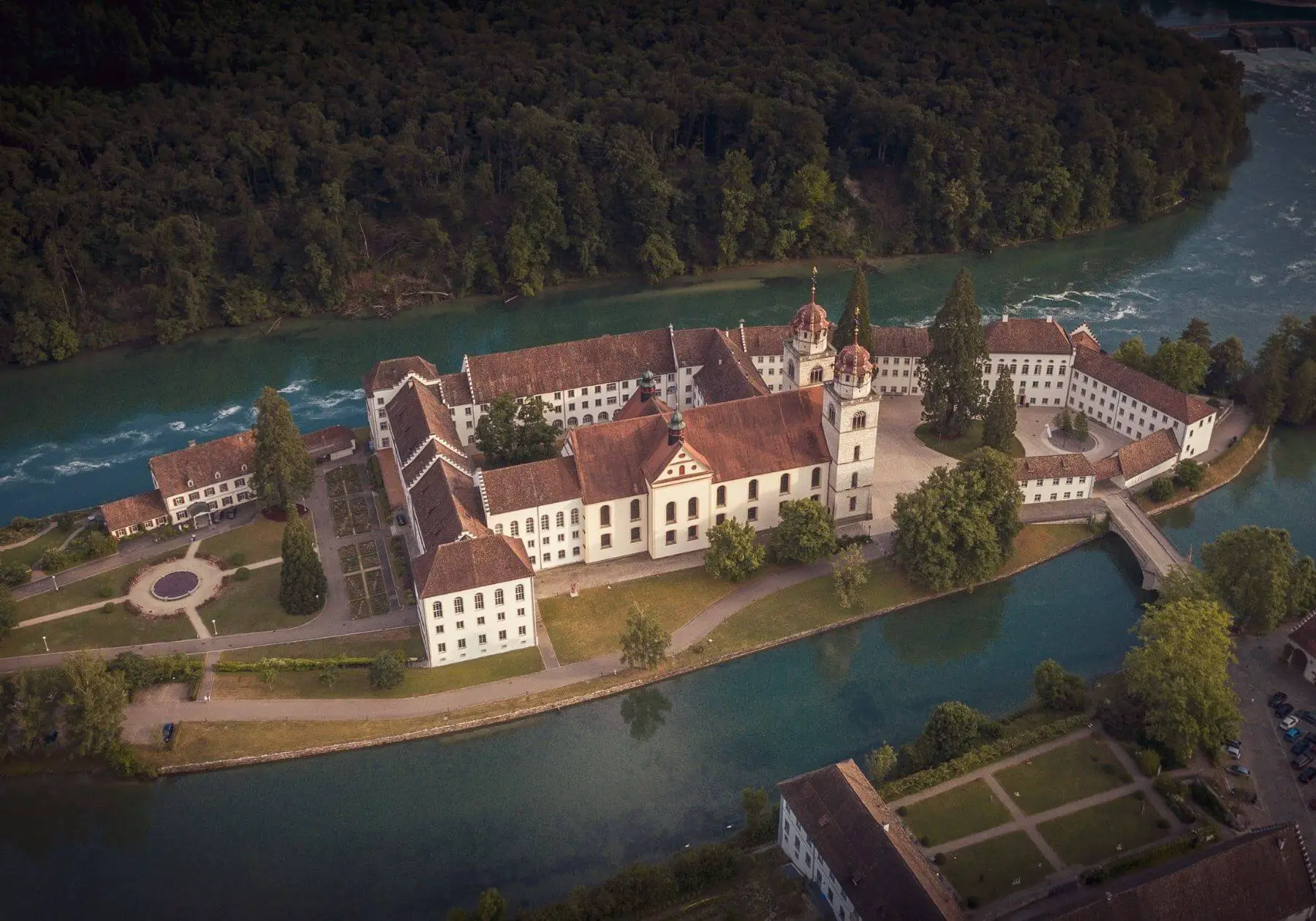
St. Mathew Church Lucerne
Here Cosima and Richard got married. She had to convert from the Catholic faith. The wedding took place on a small scale, “in silence and without all ceremonies and festivity, the children present and, of course, the curious people who did not let themselves be pushed back (diary entry by Cosima).
Matthäuskirche:
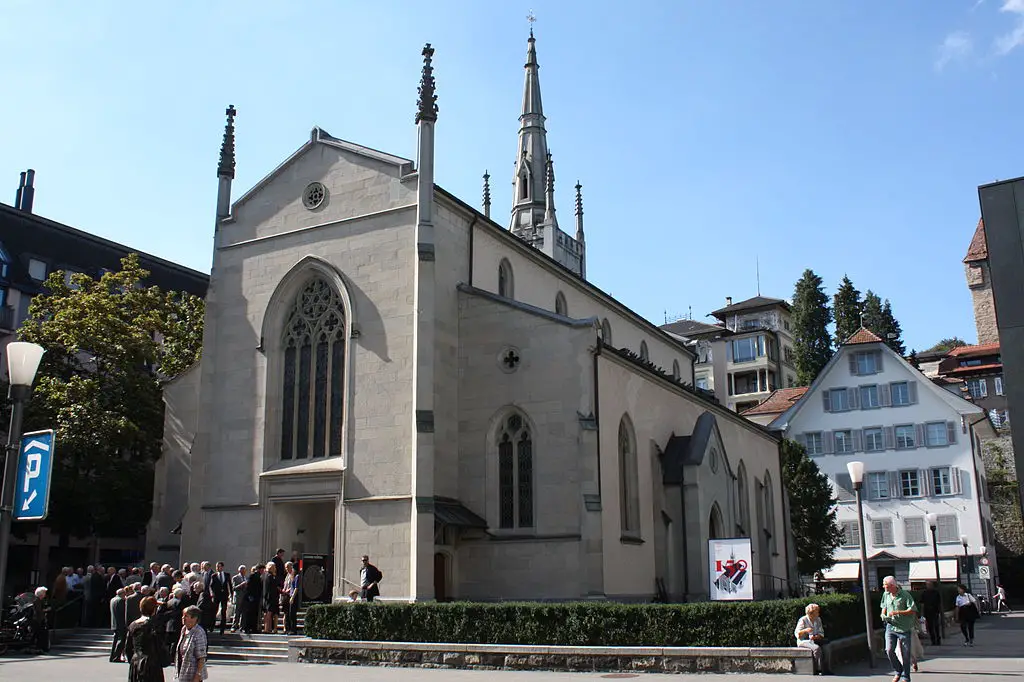
MONUMENTS
Mendelssohn Memorial in Wengen
Fascinated by the panorama of the three famous glacier giants Eiger, Mönch and Jungfrau, Mendelssohn pulled out his painting tools.
Panorama Eiger, Mönch und Jungfrau:
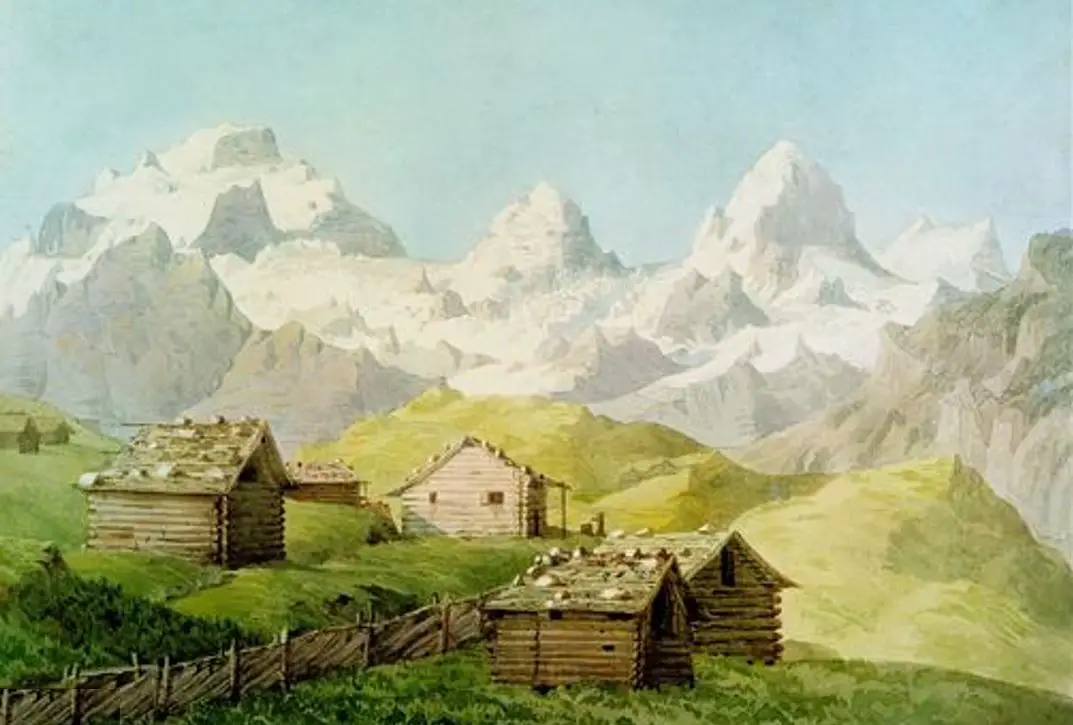
The village of Wengen is now a renowned tourist village. When Mendelssohn passed through the village in 1842, there were only a few barns there.
Above the village, in the so-called Mesti, he made a sketch of Wengen and the Jungfrau at that time. It is considered to be the historically oldest representation of the village of Wengen. Exactly at the place where Felix Mendelssohn made his sketch stands the memorial today. The memorial is located 5-10 min. above the Beausite Park Hotel. Please follow the signposts. The path to the memorial is closed in winter due to avalanche danger. (Source website https://mendelssohn-wengen.ch/de/).
Mendelssohns sketch of the Jungfrau Massif:
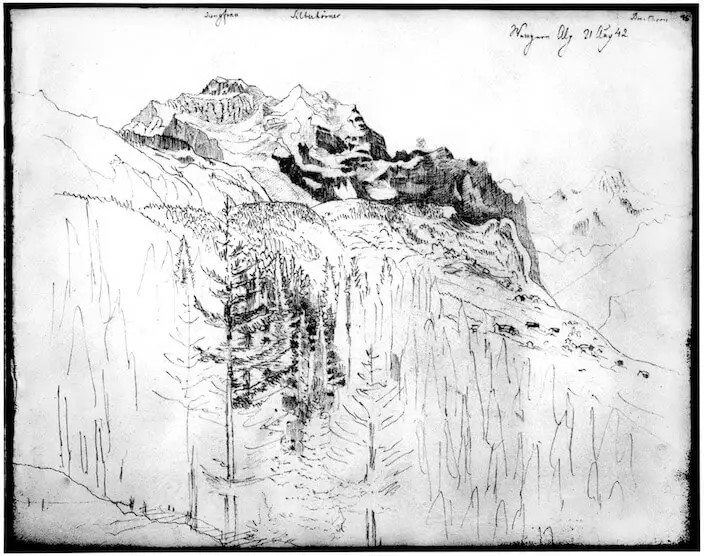
Photo from the place where Mendelssohn drew:
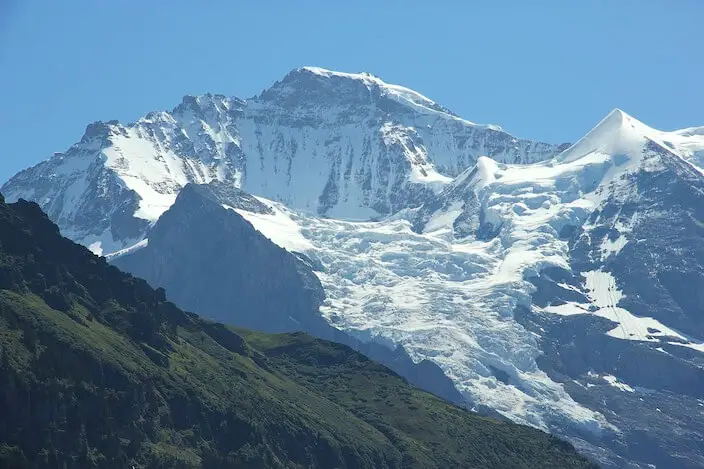
The memorial place:
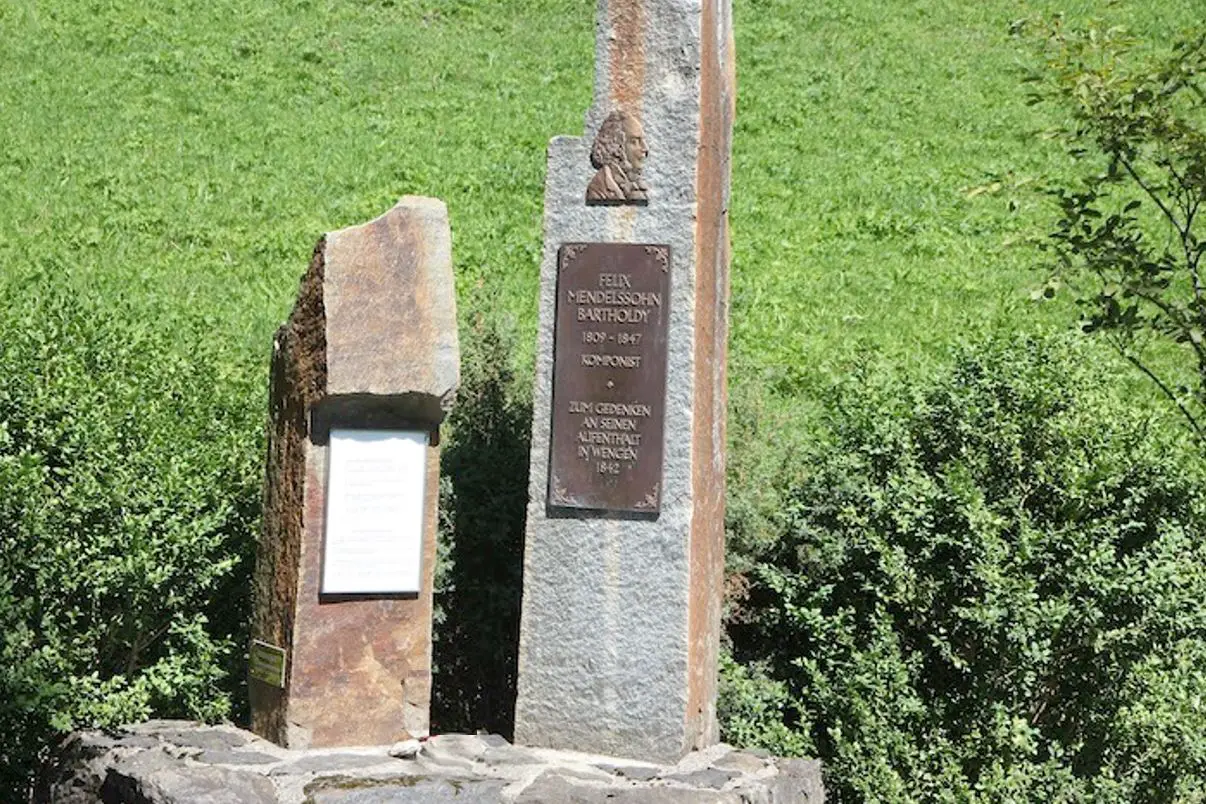
Strawinski Statue in Vevey
For some time now, streets, squares and a music hall in Montreux have been named after the Russian composer, and since 2014 a sculpture has stood on the “Quai des Vernex” promenade:
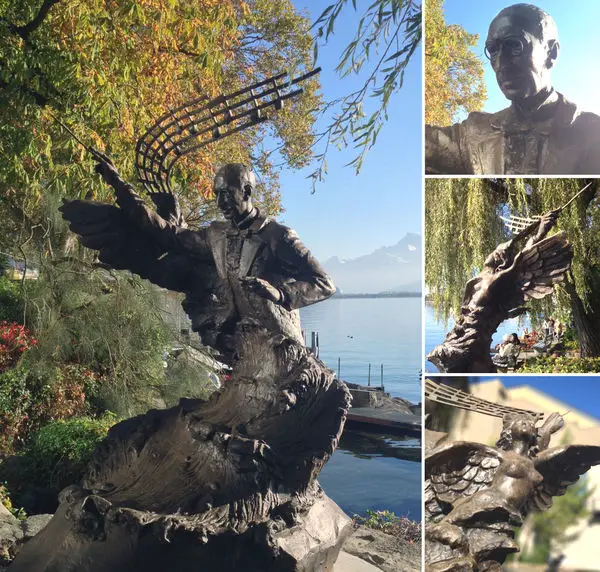
HOUSES OF ARTISTS
Giacomo Puccini in the Ticino village of Vacallo
The small Ticino village of Vacallo, near Chiasso, had the honor of hosting two greats of opera music in 1892. Puccini went to the summer resort of this village several times between 1886 and 1892 and rented a house. A stone’s throw away, Ruggiero Leoncavallo was at work in the hotel of today’s “Osteria del Teatro”. Both hung posters out of the window as a sign of their presence, Leoncavallo a clown as a sign of “Pagliacci” just premiered by Toscanini and Puccini a fist as a sign of Manon (Fist = “Manone” in Italian), as he was at work on “Manon Lescaut“, Leoncavallo even wrote a few verses for his colleague.[/sc_fs_faq]
Both houses still stand today, a plaque commemorates Puccini’s visits to the summer house at Via Giacomo Puccini 2, and in his honor Leoncavallo’s hotel at the time is called Osteria al Teatro Puccini.
Puccini’s house in Vacallo:
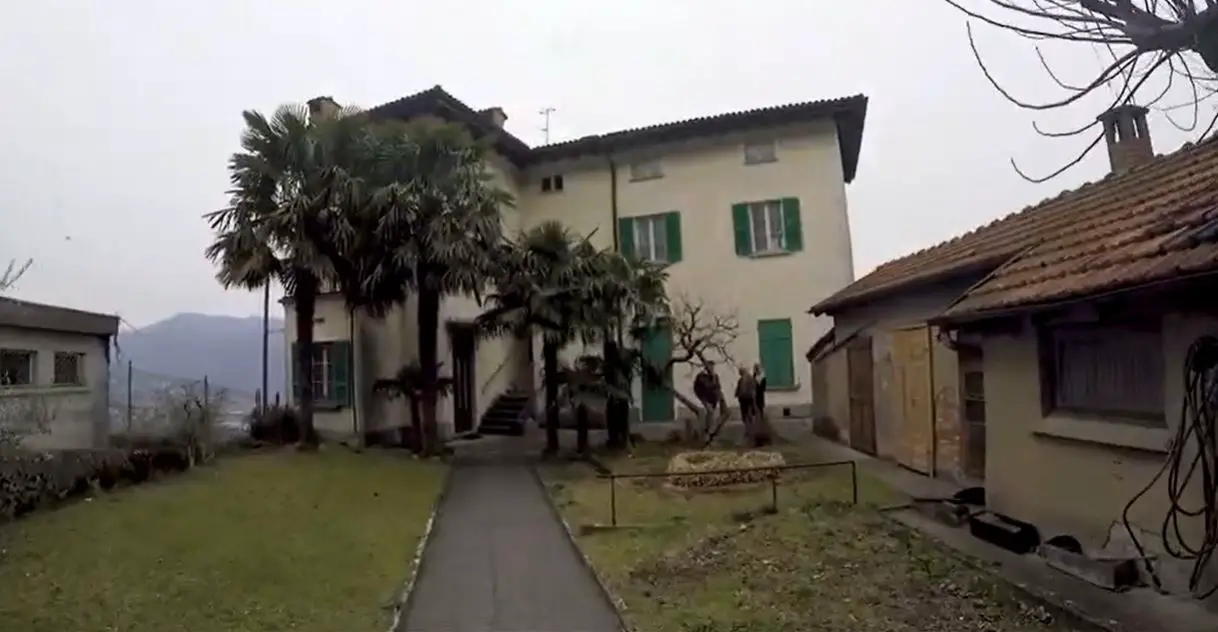
Strawinskis Villa Rogivue (heute Maison d’Igor) in Morges
Most of the houses or hotels where the Stravinskis lived are no longer standing, but the beautiful Villa Rogivue can still be seen in its full splendor in a park. Stravinsky lived here with his family from 1915-1917, and it currently houses a beautiful restaurant and inn and is called “La maison d’Igor”.
Villa Rogivue (historic):
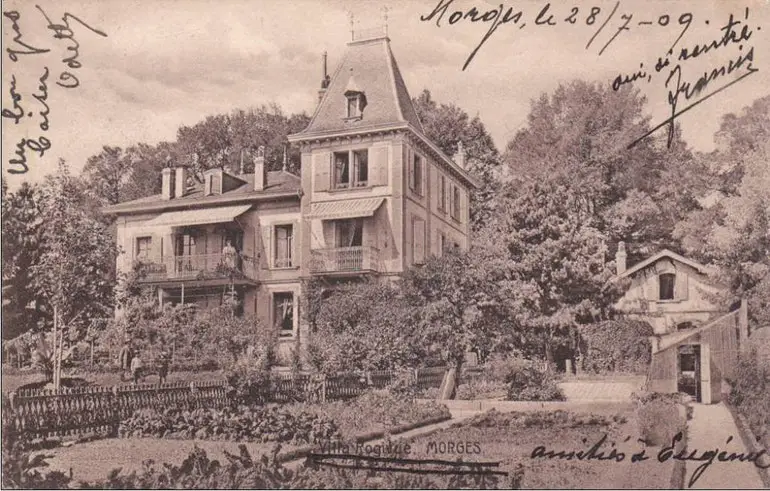
La Maison d’Igor:
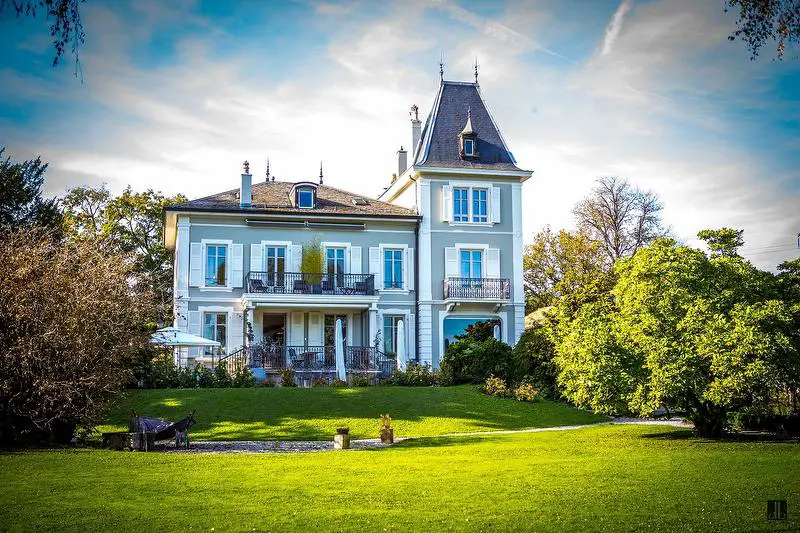
Wagners Villa Wesendonck in Zürich
In 1857, Wagner moved into an annex (the “Asylum”) of the Villa Wesendonck in the Enge quarter of the city of Zurich. This building is now a museum for non-European culture and can be visited; the asylum no longer stands.
Villa Wesendonck (today Museum Rietberg):
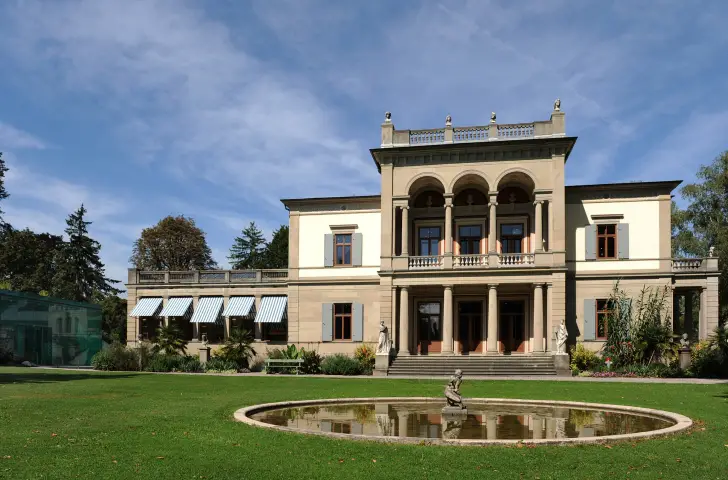
HOTELS
Hotel Interlaken in Interlaken
Mendelssohn stayed at this historic hotel five times during his life. The house dates back to the 14th century and was already a monastery inn at that time. Since 1491, the house bore the proud coat of arms on its facade. Today, one room is named after Mendelssohn, a second after another illustrious guest, Lord Byron. From here, Mendelssohn moved to the famous mountains of the Bernese Oberland.
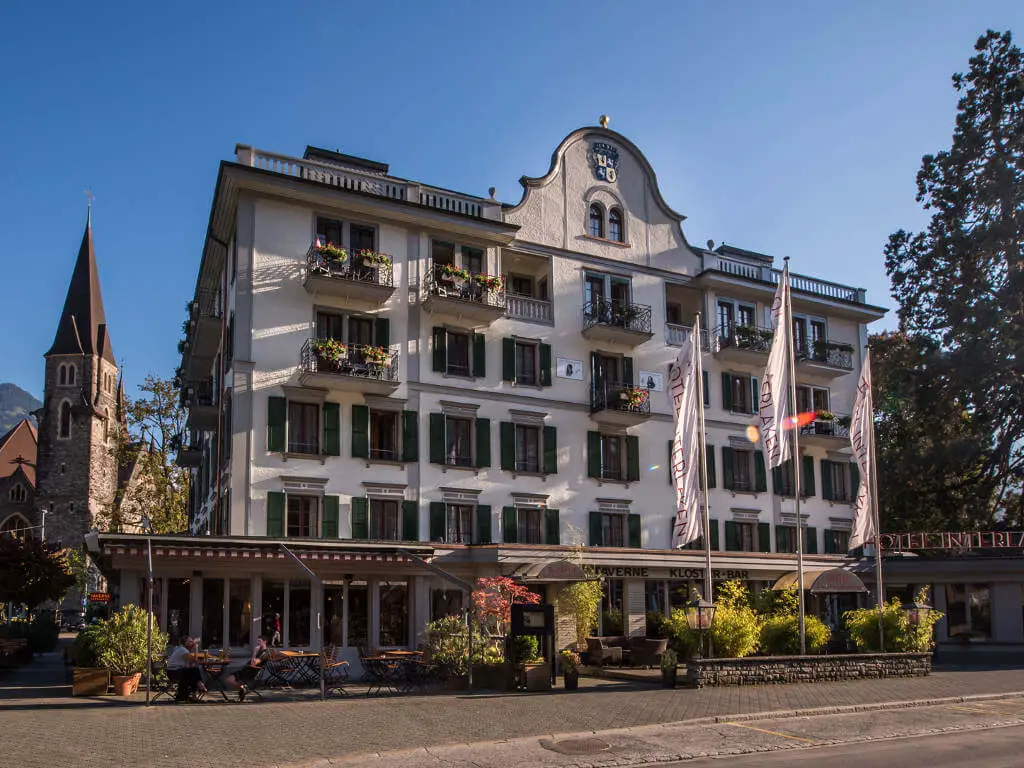
Hotel Baur au lac Zürich
In this first-class hotel, Richard Wagner read for the first time to his Swiss friends from the epic “The Ring of the Nibelung”. He read the entire Ring on four evenings in the ballroom “Le petit palais”. Later, he also performed the first act of Die Walküre in concert.
Baur au lac 1910:

Hotel Rigi Kulm
For the first time Felix visited the panorama mountain Rigi as a 15-year-old, where the family wanted to experience the famous sunrise. With donkeys they went up to the inn on the Kulm. On the first morning, the sky was still covered in rain clouds, but on the second morning it worked out. “One would have fallen down and worshipped” wrote his 4-year older sister Fanny.
Sunrise on the Rigi:
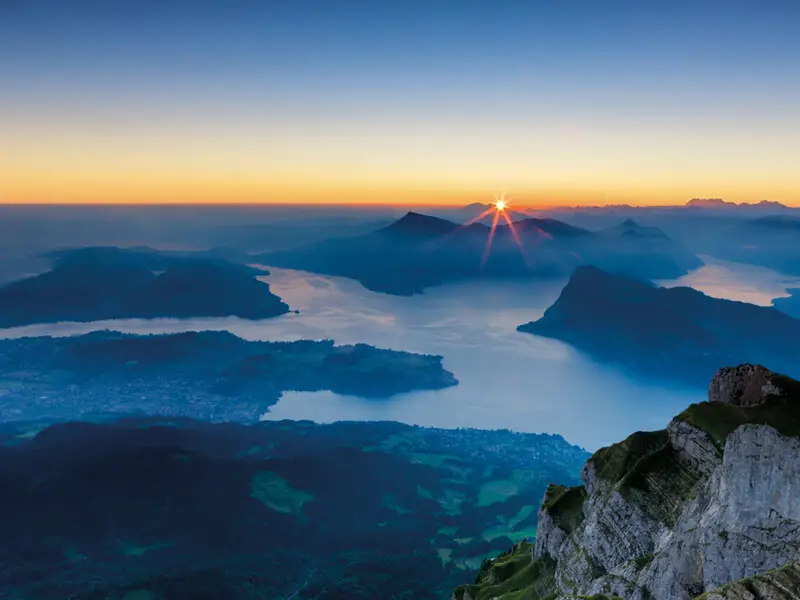
Hotel Kulm:
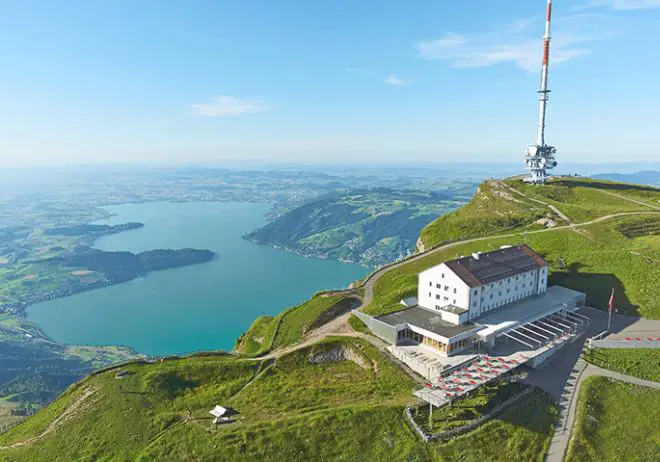
WORKS WITH CONNECTION TO SWITZERLAND
The famous fourth act of Rossini’s opera “Guillaume Tell” with the ballet of the soldiers (“Pas des Soldats”) and the apple shot (“Sois-immobile”) takes place in the market place of Altdorf. Rossini himself had never seen the Central-Switzerland, but knew Geneva and a part of the Alps of western Switzerland. For the premiere at the Grand Opéra in Paris, they sent the stage designer Cicéri to Central Switzerland, where he made sketches for the stage sets.[/sc_fs_faq]
The town hall square of Altdorf the Tell monument:
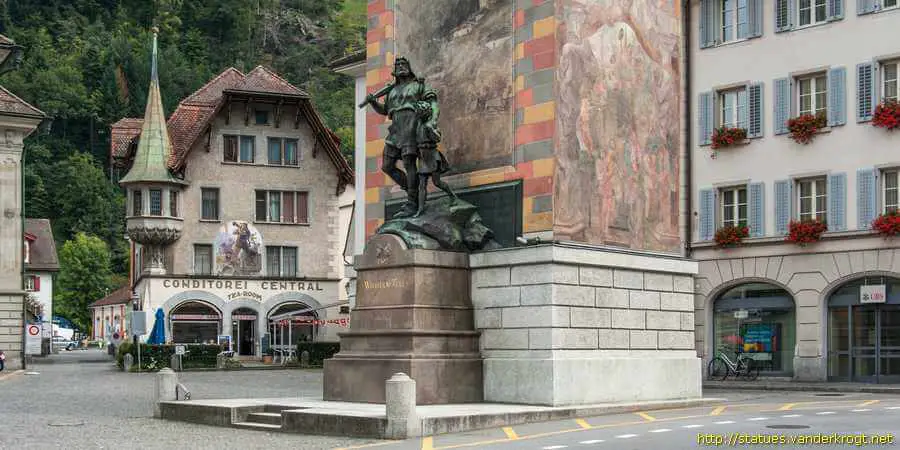
In the opera “Siegfried,” Brünnhilde asks Siegfried to preserve her divine virginity. Wagner expanded the musical motif (“Eternal Love”) into an independent composition. It became a composition for a small, 15-piece orchestra. He surprised Cosima with this piece on her birthday, with a small ensemble performing the piece in the stairwell of the Tribschen villa.
He originally intended to reserve it for Cosima, but later had to sell on the rights for financial reasons and wrote a version for large orchestra.
More about the Siegfried-Idyll:
https://opera-inside.com/siegfried-by-richard-wagner-the-opera-guide-and-synopsis/#Ewig
Mathilde Wesendonck as muse for Tristan
Wagner was inspired to write the love opera “Tristan und Isolde” by his extramarital relationship with Mathilde Wesendonck, who entered his life in 1852. He met the 24-year-old in his exile in Zurich. The story that followed is well known: her husband Otto became his Zurich patron, and Wagner began a secret relationship with Mathilde, who lived in close proximity (which Wagner always claimed in later years was platonic). In 1854, the 41-year-old Wagner wrote to Liszt that “until now he had never enjoyed the real happiness of love and he now wanted to set up a monument to her.” The plot of “Tristan and Isolde” is significant: Tristan (Wagner) and Isolde (Mathilde) cannot come together on earth because of Isolde’s marriage to King Marke (Otto). Wagner uses part of his motifs for the second act from “Träume,” the fifth of her Wesendonck songs, which he based on poems by the gifted literary woman.

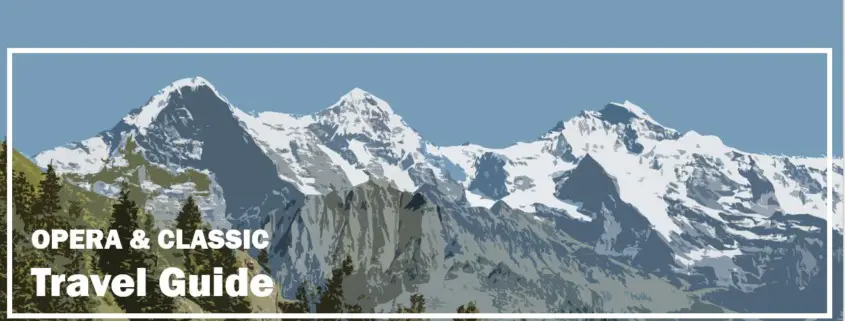


Leave a Reply
Want to join the discussion?Feel free to contribute!